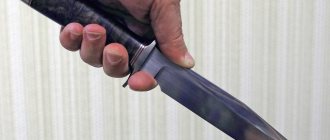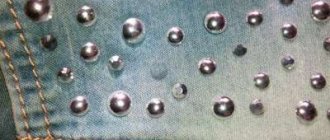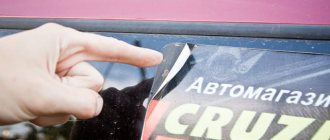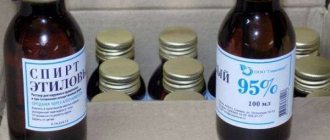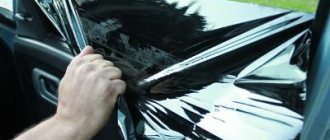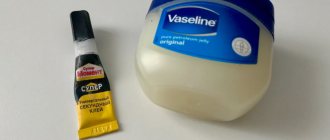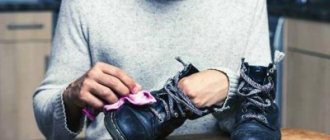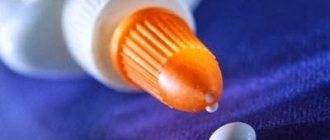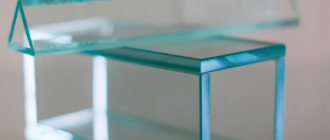Super glue is incredibly handy for home repairs. However, it's all too easy to accidentally drop a drop of glue onto an unintended surface, especially if you're repairing something small like a pair of glasses. This article explains how to remove super glue from eyeglasses without scratching or damaging the lenses or frames.
The best way to remove superglue from glasses depends on the type of lens. It is important to determine the type of lens you have to avoid damaging the existing protective coating.
But putting superglue on your glasses doesn't mean you have to rush to the eye doctor for a replacement pair. We've got plenty of tricks to safely remove superglue from eyeglass lenses.
- If superglue gets on your glasses during repairs, it is important to act quickly. The longer the ligament takes to set, the more difficult it is to remove.
- One of the most tried and true methods for removing super glue from glass surfaces is using acetone-based nail polish remover. However, this is not always the best option for cleaning superglue from glasses. Many lenses have protective coatings, such as UV or scratch protection, that are easily damaged by acetone.
- Always use a clean, soft cloth to wipe the lenses after cleaning to prevent water marks and rust.
- Do not dry your glasses with paper towels, as they may scratch the glass. If your lenses have a protective coating, use one of the alternative methods listed below to remove superglue from your glasses.
Superglue removal accessories:
- Cotton pad
- Cotton swab
- Microfiber cloth
Nail polish remover
Nail polish remover is only safe to use on glass lenses. Pure acetone will damage polycarbonate and plastic lenses, and nail polish remover contains other chemicals that will remove any protective coating from glasses.
Only use this method if you are sure it will not damage your glasses. If you are unsure, try testing a small area around the outer edge first.
You will need:
- Pure acetone or nail polish remover
- Cotton pad or swab
- Clean cloth (microfiber is best)
Dip a cotton swab or pad into nail polish remover. Rub the lens gently to loosen the hardened adhesive. Continue rubbing until all the glue is removed.
If the glue stain is particularly stubborn, soak a clean cloth in an acetone solution and wrap the lens for a few minutes to soften the bond. After removing all the glue, wash the glasses with warm, soapy water. Dry with a clean soft cloth.
How to remove with special means?
Now on the shelves of hardware stores there is a wide range of special cleaning products. Among them we can highlight the most productive ones.
Anticlean
Anti-glue is an ideal tool for removing any polyurethane-based adhesives . It has a gel-like consistency, which is convenient for application (does not spread). One tube is enough for several times, if you close it with a cap after use.
When you need to remove glue from glass, apply a cleaner and leave for a couple of hours. After the adhesive layer has softened, remove it with a spatula or other suitable tool.
The price of a 38 ml tube is from 60 to 70 rubles. The disadvantage of anti-glue is its toxicity, since it is a solvent. Therefore, caution is required when working with it. Keep it out of the reach of children.
White Spirit
This is a gasoline solvent that is widely used in the rubber industry and in everyday life for dissolving paints and varnishes. With its help you can easily deal with adhesive stains on any surface, including glass.
When working with it, observe safety precautions: wear rubber gloves and a respirator on the face (if the room is closed).
White spirit should be stored away from heat sources and open flames. In case of fire, it is unacceptable to use water to extinguish the fire.
It has a shelf life of 3 years, after which it loses all its properties. And this is regardless of storage conditions. The cost of the product varies depending on the manufacturer: foreign - from 260 rubles, domestic - from 100 rubles.
How to use it:
- Apply the product to the contaminated surface.
- Wait 10-15 minutes and repeat the procedure.
- When the glue softens, remove it using a stationery knife.
Cleaner "ZM 08184"
An effective remedy in the fight against adhesive stains of any complexity. Available in aerosol form, which is convenient for application.
Advantages:
- has a pleasant orange aroma;
- safe for others;
- applicable for any surfaces;
- does not require subsequent wiping dry.
Minuses:
- not suitable for washing off fresh glue;
- highly flammable;
- does not cope with cyanoacrylate type adhesives;
- high cost - from 1.5 thousand rubles. per bottle.
To remove glue, just spray a little product and wipe with a napkin. If necessary, repeat the action.
Soapy water
The most gentle and safe way to remove superglue from glasses is with warm water and dishwashing gel. This is the best cleaning method for polycarbonate and plastic lenses.
Be sure to use warm rather than hot water, as water that is too hot can cause the lenses to crack or the plastic frame to warp.
You will need:
- 2 teaspoons ammonia-free dish soap
- 1 glass of warm water
- soft fabric
Mix a warm soapy solution in a bowl or other container and soak a soft cloth in the solution. Wrap the glasses in a damp cloth and let the glue soften for at least an hour. Use plastic wrap to retain moisture.
If you are soaking your glasses directly in soapy water, do not submerge the newly attached part of the glasses. Remove the plastic film and wipe off the softened adhesive with a damp cloth.
Silicate glue
Silicate glue can also be removed from glass without additional effort. The easiest way is to wash off the mark with water. However, there are other methods:
- Use glass cleaner. The glass cleaner contains alcohol, which easily dissolves silicate glue. To achieve the best result, apply the product for 10-15 minutes, and only then wipe off with a soft cloth.
- Ammonia. A tablespoon of alcohol should be mixed with a teaspoon of liquid soap. Moisten a sponge in the resulting mixture and process the adhesive trace step by step. Leave the drop for 15-30 minutes, when finished, remove with a soft material.
- Petrolatum. The application of Vaseline allows you to soften the glue drop. The mark is generously lubricated with an oil mixture, left for 30 minutes and carefully removed by lifting the stain.
There are unusual situations in which our glasses are suddenly damaged. For example, during repairs, liquids, gels and even glue can get on the glass, which sets instantly . And it is not possible to remove it without damaging the surface of the lens. What to do in such cases? Get rid of optics, without which we are helpless? In no case, if it is made of glass, then there is a way out. Here are some tips you can use to solve this problem and remove the glue.
Alcohol
Using alcohol to remove super glue is safe for both glass and plastic lenses. However, if your lenses have a coating, first test a small area on the edge of your glasses to make sure you won't damage the coating.
You will need:
- Isopropyl alcohol
- Soft cloth (microfiber is best)
- Cotton pad or swab
- Mild soap
- Warm water
Soak a cotton ball, swab, or soft cloth with alcohol. Rub the lens gently until the adhesive becomes soft and comes off. Rub with a clean cloth or cotton swab as the softened adhesive will peel off from the lenses.
After removing all the glue, wash the glasses with warm, soapy water. Dry with a clean soft cloth.
Glass glue removers
How to remove super glue from glass:
- production compounds - anti-glue;
- folk remedies - hot water;
- chemicals - dimexide, ammonia;
- household products - glass cleaner;
- mechanically - with tape, plastic card.
When using special compounds and chemicals, you must carefully read the instructions for their use and strictly follow precautions and safety precautions.
Anticlean
How to remove super glue from glass? Super glue, which has high quality characteristics, is practically impossible to clean with water, household and chemical substances, and is resistant to sudden temperature changes. In this regard, it will be very difficult to get rid of its traces using improvised means, and in some severe cases it will be impossible. If the adhesive stain formed a long time ago, is very dry and occupies a large area, it can only be removed by professional means.
These include substances marked “Anti-glue”. You can buy it in any specialized stores (for example, where they sell building materials, they always offer a wide selection of anti-glue from different manufacturers) or in hardware departments, as well as in auto parts stores. Anti-glue is often used to remove glue from windows and other car parts. It quickly performs its task without damaging the tinting or the car windows themselves.
The disadvantages of anti-glue from any manufacturer primarily include its high toxicity. Therefore, while working, it is necessary to have rubberized gloves and a protective face mask to avoid damage to the skin and mucous membranes of the eyes and nasal cavity.
Processing should be carried out in a well-ventilated room or in the fresh air. It is undesirable for children and animals to be in the work area.
The second significant disadvantage of anti-glue is the small volume of the tube. To wash super glue from a large area of glass, you will have to use more than one package and spend a lot of money. Therefore, large areas, as a rule, are not treated with anti-glue.
How to remove superglue from glass using a special composition? Before use, you must carefully study the instructions. The procedure is as follows:
- Apply anti-glue to a household sponge or napkin.
- We carefully wipe the adhesive stain, trying to act in a targeted manner, without smearing the product all over the glass. This way, it will be easier to wipe off the mark and not leave unnecessary streaks.
- Leave the applied composition for the time specified in the instructions (usually 20-25 minutes).
- After time, wash the substance with a dry, rough cloth.
- If the stain is very dry, it is possible that the treatment will have to be carried out several times until the stain disappears completely.
The algorithm of actions can be seen in the video.
Universal wiper
Modern windshield wipers, purchased from a regular hardware store, are widely used to remove sticky substances. The secret lies in its multicomponent composition, namely the content of ethyl alcohol.
To get rid of unnecessary glue on glass using a glass cleaner, you need to:
- Spray the product onto the problem spot.
- Wait 25-30 minutes, but do not let it dry.
- Carefully remove the glue with a wooden or plastic spatula.
After applying glass cleaner to the glue, a complex reaction begins, in which the latter becomes soft and viscous. Subsequently, it can be easy to clean off with a special spatula or even a cotton swab.
Gasoline and household solvents
The use of kerosene-based household solvents, or gasoline or kerosene itself, will help you cope perfectly with unwanted splashes of superglue.
How to clean super glue from glass using gasoline solvents? For cleaning you will need:
- Wet a rag or cotton wool with the substance.
- Apply to the contaminated area.
- Wait about half an hour.
- Repeat the procedure and wait another 15 minutes.
- Scrape off the softened glue with a spatula.
After such cleaning, oily stains and smudges may remain on windows, glasses, car windshields and other glass parts. Therefore, it is recommended to wash the item with water with a small amount of powder added or another non-aggressive detergent.
Acetone
Technical acetone works remarkably well as a powerful solvent for super glue from any manufacturer. It is widely used for cleaning large volumes and dried contaminants.
The main disadvantage of the substance is its increased toxicity. Therefore, before work, you need to stock up on a pair of rubber gloves and a protective face mask.
Use acetone as follows:
- Apply to a soft washcloth, cotton wool or rag.
- Wipe, moving from the edges to the middle of the stain.
- The procedure is carried out until the adhesive substance is completely dissolved.
- After finishing the work, the area cleaned with acetone is washed with soap and then with clean hot water.
Nail polish remover
The procedure for working with nail liquids is exactly the same as with technical acetone. Wipe the adhesive substance with the composition until it is completely dissolved.
Only fresh, non-hardened marks are rubbed with nail liquid. Otherwise, achieving a positive result will be quite problematic.
In addition, it must be used carefully, because there is a risk that the treated area, like the glue itself, may change color. In some cases, the stain does not disappear, but only spreads across the surface and leaves stains that are difficult to wash off.
Dimexide
Dimexide is an effective remedy for combating super glue that gets into unwanted areas. You can purchase it at any pharmacy at an affordable price.
This drug is toxic and may harm your health. Therefore, during work, you should never neglect precautions and safety precautions.
- The composition is applied to a cotton swab.
- Gently rub the surface in a circular motion, trying not to go beyond the edges of the stain.
- Cotton pads or swabs are constantly changed until the adhesive trace is completely dissolved.
- If you do not change the cotton wool, the glue remaining on them will constantly stick to the adjacent areas and leave cloudy stains.
- At the end of the work, wipe the surface with a coarse dry rag.
Ammonia and dishwashing detergent
To obtain a special solution that removes sticky stains from glass, mix the following components:
- ammonia (1 tbsp);
- washing gel (1 teaspoon).
A napkin is thoroughly moistened in the resulting mixture and applied to super glue. The procedure is repeated several times over 60 minutes. When the sticky substance becomes soft, carefully remove it with a plastic, wooden or rubber spatula.
Liquid soap
A solution of liquid soap will remove splashes of glue from glass products, as well as make them shiny and give an aesthetic appearance.
To work, you need to dilute the soap in warm water. Apply it with a foam sponge or a soft microfiber cloth. After 15-20 minutes, the surface is carefully rubbed with a soft bristle brush. Do not use wire wool or other metal tools.
Vegetable oil
The oil is rubbed into the adhesive substance with a sponge or napkin. Leave for about half an hour, after which the glass surface is polished with special compounds.
As a result of this treatment, the product looks like new, without scratches, smudges or stains. Cleaning with vegetable oil is a simple and effective method accessible to everyone.
Mechanical method
If the above remedies do not give the desired result, you can resort to mechanical pressure on the problem area. Among these methods, a wooden, rubber or plastic spatula, as well as regular or construction tape, are widely used.
When working with glass parts, do not use knives or sharp blades.
White Spirit
A rag soaked in white spirit is placed on the area stained with glue and left for 20-30 minutes. At this time, a reaction occurs that helps soften the super glue. At the end of the process, the sticky substance can be easily removed with a dry cloth.
You can see ways to clean glass from super glue using improvised means and at home in the photo on the Internet.
There are a huge variety of methods and means for removing super glue from glass. The main thing is to choose the most suitable one for yourself and approach solving the problem with all seriousness.
Toothpaste
Removing superglue with toothpaste is safe for both glass and plastic lenses. However, check a small area of the edge of the lens if your glasses have a protective coating to make sure the toothpaste doesn't damage it.
Avoid using abrasive toothpaste or microcleaners, as these may scratch your glasses. Wet glasses with warm water, then apply a small amount of toothpaste to a damp cloth or cotton pad.
Gently rub the glue stain in a circular motion until it becomes soft and comes off. After removing all the superglue, wash your glasses with warm, soapy water. Dry with a clean soft cloth.
Stationery glue
Stationery glue is water-based. It is easier and easier to remove it from glass than quick-drying multi-component compounds. To remove contamination it is recommended:
- Use water. A fresh stain can be easily washed off with warm water. A soft cloth is moistened and the remaining glue is gradually wiped off the glossy surface.
- Use alcohol. For hardened stains, it is better to use alcohol. Moisten a small sponge or soft cloth with it, thoroughly soak the stain and slowly remove traces of the adhesive mass. This method is perfect for cleaning equipment screens. He takes care of the glass of mobile phones, tablets, and TVs.
- Cool. You can cool the hardened glue with a piece of ice. It is applied to the drop for a couple of minutes. When exposed to cold, the composition becomes more brittle and comes off the glass more easily. Remove the frozen mass using a dull knife or spatula.
Baking soda
Make a paste of baking soda and coconut oil to safely remove super glue from glasses. Baking soda is non-abrasive and will not scratch lenses. Coconut oil loosens hardened adhesive, releasing it from the surface of the lens.
You will need:
- ¼ cup baking soda
- ¼ cup coconut oil
Mix equal parts baking soda and coconut oil to form a thick paste. Using a soft cloth or cotton swab, apply the paste to the affected area and leave on for at least 15 minutes.
Gently rub the glue stain with a cotton swab or clean cloth until the hardened glue dries. Wash your glasses with warm, soapy water and dry with a soft cloth.
Removing glue from masking tape
Fresh marks can be removed with oil or drying oil: just soak the stains for 15 minutes and remove the remaining residue with an oily rag.
Important! In case the glue has been on the surface for a long time and has had time to dry, it will be enough to moisten it with hot water and let it get wet, then wipe off the residue with a rag. If you cannot remove all the stains, use a regular eraser.
Olive oil
Warm olive oil loosens the bond between the lens and the superglue and is also ideal for wiping superglue off your finger or hand. Heat a small amount of olive oil in the microwave for five to ten seconds.
Dip a cotton swab into warm olive oil and gently rub the lens in a circular motion until the superglue dries. Wash your glasses with warm, soapy water and pat dry with a fresh, soft cloth.
Safely scrape super glue off lenses
Heating the glue patch helps loosen its adhesion to the lens surface. Before attempting to scrape a bead of glue off your lenses, soak a clean cloth in warm, soapy water and wrap the affected area for at least ten minutes.
Use plastic wrap to trap moisture and cover them with a thick towel for insulation. Use a razor blade to scrape off the super glue from the glass lenses only. A metal razor blade can damage plastic lenses and protective coatings.
Lubricate glass surfaces with warm, soapy water before using the razor blade. Keep the edge at a 40-45 degree angle to the lens. For coated lenses and plastic lenses, use a blunt-edged object such as a nail file or butter knife.
Let the glue dry completely before scraping so you don't smear the goo while it's still wet. Alternatively, try freezing the glasses overnight to make the glue brittle and easier to scrape off.
What should you not use to clean spectacle lenses and why?
To avoid damaging your glasses, do not use abrasive materials to remove glue:
- sponges,
- emery skins,
- powdered products,
- metal scourers.
They can damage the optics by leaving scratches, after which it will be problematic to use.
It is undesirable to overheat the glass, which can lead to cracking. Therefore, when mechanically removing adhesive contamination, do not bring the hairdryer too close to the lenses and try to ensure that the heating is uniform.
Adviсe
The next time you need to use superglue to secure your glasses, try wrapping your lenses in plastic wrap or non-marking tape to protect your lenses from accidental glue spills. Do the same with any parts of the glasses frame that are near the repair site.
Super glue is convenient for quick repairs around the house. However, sometimes it seems to slip away onto unintended surfaces at the last moment. If there is some superglue left on the lenses when attaching your glasses, don't worry.
There are many ways to remove superglue from glasses. Be sure to find out what type of lenses you have when choosing your adhesive removal method to avoid damaging your glasses.
How to remove super glue from glasses
Rules for removing superglue
Here are simple recommendations that will be useful:
- Traces of fresh glue are much easier to remove than dried ones, so if possible, try not to delay cleaning;
- To remove glue from glass, it is prohibited to use solutions with abrasives - scrubs with small and large granules, granular washing powders - or metal objects for mechanical removal of glue. They are likely to damage the glass surface and leave scratches;
- Solvents should not be used to clean glue from the plastic parts of glasses, because the plastic may react with them;
- High temperatures also do not help clean the lenses from glue; moreover, they will inevitably lead to damage to both the glass and the plastic frame;
- After cleaning, the glasses can be wiped with a microfiber cloth or left to dry naturally.
